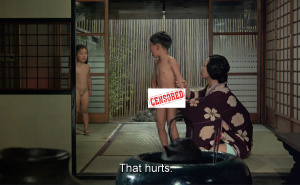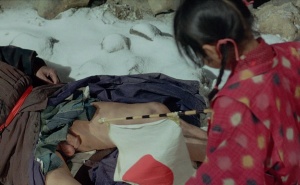
Fear and horror are not the real and final reaction on the contrary, they are a temptation to overstep the bounds.” The limit is only there to be overreached. But we are wrong to take this limit and the individual’s acceptance of it seriously. Horror seizes him at the thought that this limit may cease to be. "There is always some limit which the individual accepts. It presupposed man in conflict with himself."Īnd as Bataille writes in another work - Eroticism: Death and Sensuality - taboos, or limits, are sociocultral boundaries that need to be broken down.

Desire in eroticism is the desire that triumphs over the taboo. This is much the same argument that Georges Bataille - the leading thinker around transgression and taboos - makes in his work Death and Sensuality: A Study of Eroticism and the Taboo: "Eroticism differs from animal sexuality in that human sexuality is limited by taboos and the domain of eroticism is that of the transgression of those taboos. Only thus can “obscenity” be rendered essentially meaningless." Pornographic cinema should be authorized, immediately and completely. Pornographic films are thus a testing ground for “obscenity,” and the benefits of pornography are clear. When that which one had wanted to see isn’t sufficiently revealed, however, the taboo remains, the feeling of “obscenity” stays, and an even greater “obscenity” comes into being. When we feel that everything has been revealed, “obscenity” disappears and there is a certain liberation. As Oshima later wrote in Theory of Experimental Pornographic Film: "The concept of “obscenity” is tested when we dare to look at something that we desire to see but have forbidden ourselves to look at. Oshima's own explanation of the obscenity, however, and his defence of it, if you want to frame it in those terms, is a very common argument among transgressive artists for doing what they do. Oshima was even hauled up on obscenity charges over it. If that sounds rather obscene, then you'd not be the only one who has thought that of the film. The film is available uncensored in most parts of the world now, but not in Japan, and that's because of one particularly notorious scene where Abe's lover takes an egg and puts it inside of her in its entirety. Early on it's tame enough stuff - standard oral sex (complete with the result) and the like - but as the film gets closer to its climax the sex games that Abe and her lover play certainly go places. Oshima decided to show this on film through a lot of unsimulated sex - in fact all the sex scenes were unsimulated. The film is fictionalised, but checks off the key points in Abe's story and the descent into destructive sexual obsession. She got a rather lenient prison sentence (five years or so), and went on to become something of a celebrity for her story. She was eventually arrested, and the media frenzy around "Japan's Sade" (Sada was a really convenient name) fascinated a nation that was deep within the throes of nationalism and war, and really needed the scandal that Abe's story gave them. In The Realm Of The Senses is a dramatised take on the story of Abe Sada, a real-life figure who accidentally erotic asphyxiated her lover to death, before decided to cut off his penis and testicles and carry those around with her.

Even among that company though, Ohsima's In The Realm Of The Senses pushes boundaries hard.
#In the realm of the senses movie download crack#
History's greatest film maker (don't fight me on that one), Stanley Kubrick, also took a crack at the question with Eyes Wide Shut. For a more contemporary example, Ang Lee's Lust, Caution certainly turned heads. Tinto Brass' Italian erotic drama, Caligula, is possible the best known, if only because it had Hollywood A-list talent including Helen Mirren, Peter O'Toole and Malcolm McDowell involved. There have been plenty of films that have challenged the boundaries between art and pornography. Oshima Nagisa was perhaps not as well known in the mainstream as Fukasaku, but he was every bit as important to Japanese New Wave, and In The Realm Of The Senses is his masterpiece. Japanese New Wave cinema was a major art movement from the 1950s to the 1970s, and it's most notable because it made embracing taboo material central to its themes. From the modern auteurs such as Sono Sion and Miike Takashi, through to the great master of the form, Fukasaku Kinji, Japanese filmmaking and transgression have been so closely linked that the people have even given the loose collection of filmmakers and their work a genre. Japanese cinema has had a long tradition of embracing transgression.


 0 kommentar(er)
0 kommentar(er)
